What’s the difference between reach and impressions… and other digital marketing terms worth understanding.
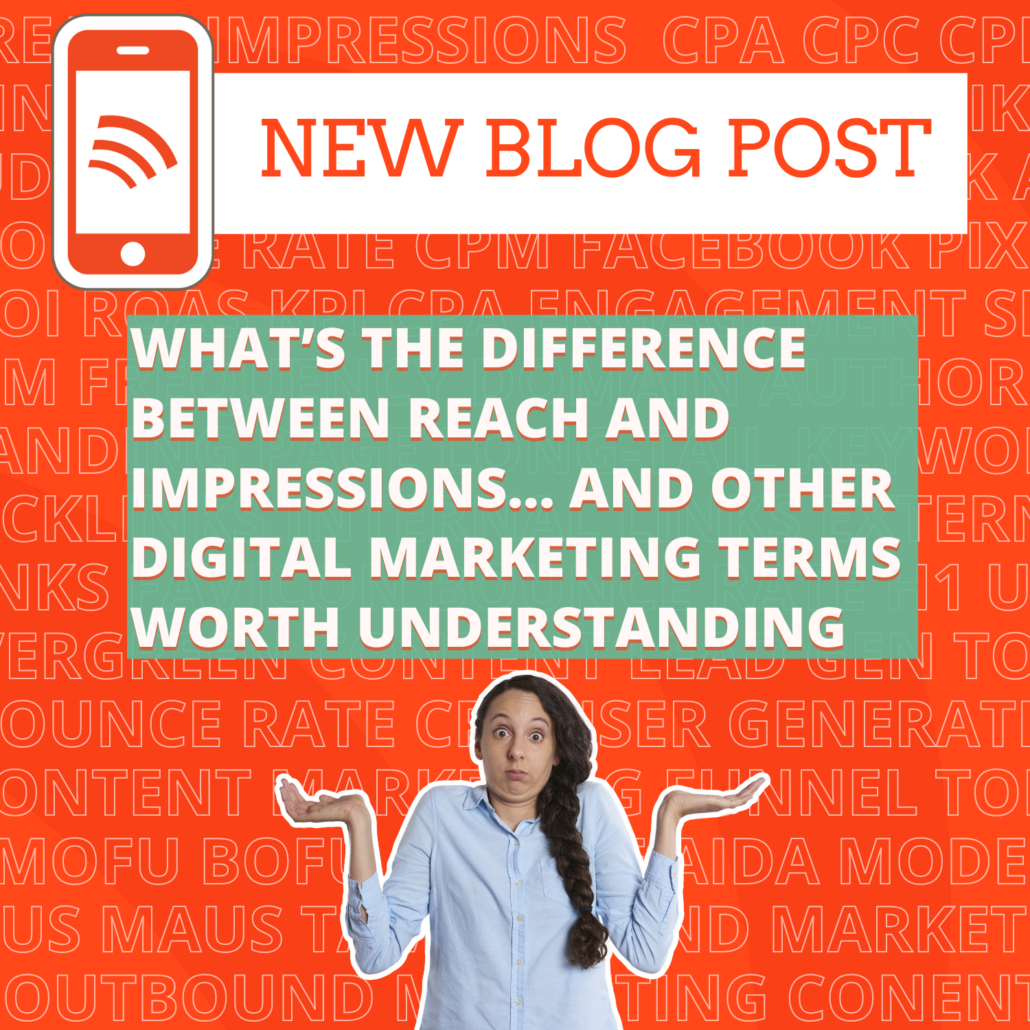
Digital marketing, like every other industry, comes with its own set of acronyms and terms to navigate, wade through and try to make sense of. While at first glance it might feel overwhelming, understanding the language of digital marketing is important, if you want to succeed at… digital marketing!
Whether you’re a digital marketing consultant, run an e-commerce shop, manage Facebook ads or simply use the internet to market your business, nonprofit, brand or hobby… go ahead and bookmark this blog post and refer back to it whenever you come across a digital marketing term or acronym you aren’t immediately familiar with.
What’s the difference between reach and impressions?
The difference between reach and impressions is a big one. At first glance, reach and impressions seem the same. But they are not!
Reach is how many unique people saw an ad. Impressions is how many times the ad was seen in total.
So if five people saw an ad, but one of them saw it three times, the ad would have a reach of five and eight impressions.
You want (need!) people to see your ad more than once. But you don’t want them seeing the same piece of creative 20 times a day, every day for weeks on end.
Which is why it’s so important to understand the difference between reach and impressions.
If your impressions are high, but your reach is low, that could indicate that your budget is too large for your audience, that your audience is too narrow for your budget, or simply that it’s time to add some new creative into the mix.
What is frequency?
To figure out how many times on average someone saw your ad, you want to divide your reach into your impressions. The end result will be your frequency.
So in our example above, we had a reach of 5 and 8 impressions. 8 ÷ 5 = 1.6
So on average, everyone who saw your ad saw it 1.6 times.
Let’s keep going. Here are some more digital marketing paid ad terms you should know
CPC: Cost per click — how much it costs to get each person to click on your ad.
CPM: Cost per thousand (that M is a Roman Numeral 🤷♂️) — how much it costs to get 1000 impressions of your ad.
CTA: Call To Action — what do you want people to do after seeing your ad?
Boosted vs Dark Ads: A “boosted post” is one that’s live on your feed that you put money behind. A “dark ad” is an ad that does NOT live on your feed, but you spend money to get it to reach folks.
Let’s say you’re a clothing brand. You might want to share a post announcing a storewide sale. That’s great for a boosted post.
But if you’re running specific ads to women under 25, another to women over 45, a different one to men who like County music, and another to parents… your feed might feel a bit overwhelming. Dark ads solve that issue for you, allowing you to target ads at specific audiences without having all of the ads living on your feed.
Retargeting: Have you ever looked at a pair of shoes online, and then the next day seen an ad for that exact pair of shoes on Instagram or Facebook? That’s not magic — that’s retargeting!
You can retarget based on general Facebook or Instagram engagement, video views on Facebook or Instagram, visitors to your website, visitors to a specific page on your website… all that fun stuff.
Facebook Pixel: But how can Facebook retarget a visitor to your website you might be asking? Simple: through the Facebook Pixel!
The pixel is a small piece of code you add to your header that enables Facebook to track visitors to your site.
Other platforms also have such pixels, including Twitter and LinkedIn.
Lookalike Audiences: Facebook Advertising allows for 3 different types of audiences, Custom, Saved and Lookalike. Custom Audiences are unique to you (your mailing list, your website traffic, your engaged community). Saved Audiences use Facebook’s “saved” data to target people in an area, of a specific age group or those interested in a certain topic. Lookalike Audiences are where you take a Custom Audience of yours that is performing well, let Facebook determine what those folks have in common and then find other people with the same things in common. Big caveat: if your Custom Audience isn’t working, your Lookalike Audience will also not work. If your Custom Audience is working, then your Lookalike Audience MIGHT work.
Want to learn more about Custom, Saved and Lookalike Audiences in Facebook? Let’s chat!
CTR: Click Through Rate — what percentage of people clicked on your content after seeing it?
ROI: Return On Investment — If you’re running e-commerce or fundraising ads, you probably want to know how much money you are bringing in compared to how much you are spending. That’s your ROI.
ROAS: Return On Ad Spend — similarly, Return On Ad Spend tells you exactly how much each sale cost you in ads. Due to changes in online tracking, it has gotten hard to track ROAS directly in the Facebook Ads Manager. But you can still track your own ROAS by dividing how much you spent into how much you have brought in.
CPA: Cost Per Acquisition — if you’re running lead ads, the cost to get a single lead is your CPA.
Engagement: Anytime anyone does something with your ad, that’s engagement. This is also true for organic content (which we’ll get into that next!).
So likes, comments, shares, video views… all that fun stuff is engagement.
Okay, so what is the difference between paid and organic social media content?
Paid simply means that you put money behind it. Organic, on the other hand, means that you did not. So a Facebook post or tweet — those are organic content, unless you whipped out your credit card to promote them.
Likewise, when it comes to SEO (more on that below), paid traffic is when you spend money to get folks to visit your site. Organic traffic is when they find you on their own through Google or another search platform.
Let’s look at some more digital marketing terms you should know in the SEO space
First of all, what’s SEO?
SEO is Search Engine Optimization. It’s the ability of someone to find you on Google (or another search platform). If someone searches a very general keyword in your industry, and you’re the first thing to come up on Google, you have phenomenal SEO. If someone searches your exact name on Google and you don’t come up, you have very bad SEO. Most brands live somewhere in between.
SERP: Search Engine Results Page — what you see when you run a search on Google. You want your brand showing up. The way to show up towards the top? Having great SEO!
SEM: Search Engine Marketing — when you are putting money into driving traffic to your site via Google Ads (or Bing).
PPC: Pay Per Click — When you run Google Ads, you are literally paying per click. How much will be determined by the quality of your ads and the difficulty of the keywords you are targeting.
Keywords: What people search on Google to find you. It could be a short keyword (or phrase) – “digital marketing consultant” or a long-tail keyword – “find a digital marketing consultant in Madison, WI who works for progressive political campaigns.”
Landing Page: Where you send traffic, from Google searches, social media or anything else. I have several verticals that I serve. I don’t send them all to my homepage (not by a long shot!). I have a landing page for my general digital marketing consulting. And another for my social media keynote speaking. And then one for my social media and digital marketing trainings. I have another for my political work. Want to work with me to learn more about how to navigate Facebook, Twitter, Instagram or the Facebook Ads Manager? I teach private classes for all of them and each course has its own landing page! Likewise I have landing pages for my two podcasts — Step Up Your Social and Hello Merge Tag — as well as my newsletter Free Digital Tools. I do this because I don’t want to put the job of finding the right place on my website on a potential client or partner. I want to be able to send them directly to the place on my website that will be most useful for them. It’s called the landing page, because it’s literally the page I first want them to land on.
What Are The Three Types of Links In SEO?
Want to get more traffic to your landing pages? Links are your friend! There are three types:
Backlinks (also called Inbound Links): this is when another website links to yours. Google LOVES backlinks. Especially from websites that are highly trusted by Google (do not buy backlinks, that can do more harm than good), but always be on the lookout for ways to earn legitimate backlinks from reputable sources.
External Links (also called Outbound Links): These are links from your website to other websites. Google likes these… IF you are sending people to reputable sites. If you are sending people to places Google knows are legit, it helps show that you are also legit. Conversely, if you’re sending folks to spammy spots, Google will not like that.
Internal Links: There are links from one landing page on your website to another. Above, when I listed out a bunch of my landing pages — each of those links directly to the landing page in question. This might not help your overall SEO but it can help Google understand which pages on your site they should prioritize when people are running searches.
What Are Some Other SEO Terms I Should Know?
DA: Domain Authority — how much Google likes a given site. Domain Authority works on a scale of 0-100. A website with a DA of 5 is not reputable (yet). One with a DA of 95 is extremely reputable! Backlinks from sites with high DA are MUCH more desirable for SEO than backlinks from sites with low DAs.
Alt Text: This is text that describes an image for folks who can’t see. It’s good for SEO, but also super important for accessibility. You can add alt text to images on your website, as well as on many social media platforms.
Bounce Rate: The percentage of folks who visit your website or landing page without proceeding on or taking action. So if 100 people visit your landing page, and 98 of them leave without doing anything else (smash that CTA button, order a product, click on to another page on your site), you have a bounce rate of 98%.
H1 and H2: The H1 on a landing page is the largest text, and it should be right at the top. It should be very SEO-friendly (use your keywords in there!). You are telling both Google and your audience what to expect from your site. Each page gets only one H1 tag. H2s are the next level down from H1s and you can have numerous on your site. H in this case literally stands for header, so feel free to break your site down regularly with H2s. Having numerous headers on a landing page can be good for the reader (as well as for Google if you use keywords strategically throughout).
UTM: Urchin Tracking Module — I’m going to be honest. I had to look up what UTM actually stood for to write this blog post. I use, and talk about, UTMs all the time. But I never actually knew what it stood for. It’s just a UTM. These are unique and trackable codes that go at the end of URLs for the purpose of knowing which sources are sending you which traffic. Anything after a ? in a url is part of a UTM or tracking code. You can use unique UTMs for ads, for links you share with influencers, on QR codes or anywhere else you want to track to know which link is actually bringing in traffic… and leading to conversions. Google Analytics will break down those UTM codes for you, to make it very easy to see which channels are working for you and which are not. Want to build your own UTM tracking codes with ease? Google has you covered!
Now Let’s Look At Some General Digital Marketing Terms
KPI: Key Performance Indicator — the metric (or metrics) you truly care about that enable you to track your ongoing success.
Evergreen Content: This is content that’s relevant all the time, as opposed to content that will no longer be relevant after a certain date/holiday/season. Holiday content can be great to share annually, but not all the time. But some content is good to have out there on an ongoing basis. Like a fir or a pine tree, that content is evergreen.
UGC: User Generated Content — This is content made by fans of your brand. Sell a product or offer a service? Telling people how great it is can be nice. But far better to encourage UGC from people who love your brand talking about how great you are!
Lead Magnet or Lead Gen Tool: Lead gen is short for lead generation. This is a free thing you give away in exchange for an email address. It has to be valuable enough that someone would want it, and it has to be relevant to your brand. Want a free checklist for going Live on Facebook? I have a free one on my site (download it here). Over the years, I’ve had many people trade me their email addresses for that free checklist. I love lead gen tools — in fact, I recently did a full episode on my podcast Step Up Your Social about them. You can find that episode here. (That episode, like other eps of Step Up Your Social is short — ~10 mins or less — and provides quick, actionable tips to take your digital marketing to the next level.)
Favicon — Look up at the tab in your browser where you are currently reading this blog post. See that little orange echo sign? That’s my favicon. Most websites have them. Those that don’t… should! If your site doesn’t have one, Google “add a favicon + ___” and fill in whichever platform your site was built in (WordPress, Wix, Squarespace…). You should find plenty of resources quickly walking you through how to add one to your site.
What Is The Marketing Funnel?
The Marketing Funnel is a concept to help understand your current and potential audiences’ relationship with your brand.
Most folks aren’t familiar with you and what you do. As you put content into the world and grow your brand, you’re bringing folks into the top of your funnel. As you continue to add value for them, you move them into the middle of your funnel. Ultimately, you show them that you are extremely valuable and they shouldn’t go another day without you and your brand and whatever product or service you provide. Now they’re at the bottom of your funnel.
And there are acronyms for all three:
TOFU: Top of Funnel
MOFU: Middle of Funnel
BOFU: Bottom of Funnel
While these are funny terms, they’re actually quite important. You should be thinking about what kind of content and offerings you are creating for all three of those levels. For TOFU, you might have a TikTok account sharing basic tips and tricks about your industry. But you have a goal to get folks onto your email list. As you move folks from TikTok to your email marketing program, they have entered your MOFU, and now you need new kinds of content to keep them engaged and excited. Then maybe you sell a course or provide digital marketing consulting or want to sell them a vacuum cleaner (whatever!) — your BOFU content should be moving them from seeing the value to taking the plunge and becoming a customer!
What’s The AIDA Model?
Another helpful way to think about this is through the AIDA Model.
They start at Awareness, move to Interest, proceed to Desire before ultimately taking Action.
Want to make a sale? First you have to walk them through a process. No one is going to buy from you, or hire you, until they are aware you exist, interested in what you do and found a desire to learn more or proceed in some way.
You can read more about the AIDA Model here.
Let’s Look At A Few More General Digital Marketing Acronyms And Terms You Should Probably Know
If you made it this far, hell yeah! You’re pretty much a pro.
I have a few more digital marketing terms and acronyms for you.
DAUs: Daily Average Users — this is how many people use a website or platform every day.
MAUs: Monthly Average Users — this is how many people use a website or platform every month.
TAM: Total Addressable Market (or Total Available Market) — this is how many people in the world might actually care about your product or service and could eventually become a customer. The TAM for Uber is anyone with a credit card. The TAM for someone selling business insurance is anyone who owns a business. The TAM for a company selling licorice dispensers inspired by Wayne’s World? Probably not huge, but almost certainly a very cool group!
B2B: Business to Business — Businesses, services or products marketed to other businesses. This might be accounting software, office lighting, digital marketing consulting specifically for law firms… anything that is intended specifically for other businesses.
B2C: Business to Consumer —Business, services or products marketed to consumers. Most products and services are B2C. If you’re selling to homeowners, or retail, or promoting your restaurant or anything related to individuals as opposed to businesses, you’re in the B2C space.
What’s The Difference Between Inbound, Outboard and Content Marketing?
Okay, final section of digital marketing acronyms and terms worth knowing. What’s the difference between Inbound Marketing, Outbound Marketing and Content Marketing?
Outbound Marketing: This is when you go out and try and get your brand, product or service in front of people directly. This can include hiring sales people, cold calling, DMing and emailing prospects, sending messages to folks you don’t already know on LinkedIn… all that fun stuff.
Content Marketing: When you create content with the goal of bringing people to you. So if you create valuable content on social media, if you blog, if you have a podcast, if you release white papers or ebooks, if you give away lead magnets… you are focused on Content Marketing.
Inbound Marketing: Inbound Marketing is focused on bringing leads to you through a combination of Content Marketing and other experiences. This can induce tools, interactive media and the like.
That Was A Lot of Digital Marketing Terms and Acronyms… Wasn’t It?!
Digital Marketing is a constantly evolving field. New concepts emerge all the time.
But if you understand these core digital marketing terms and acronyms, you should be in pretty great shape!
Bookmark this post to refer back to. And maybe share it with a friend or two who you think might appreciate it.
Come across a digital marketing term or acronym I didn’t include? Ping me and let me know. I’m always looking to keep my content as evergreen as possible!
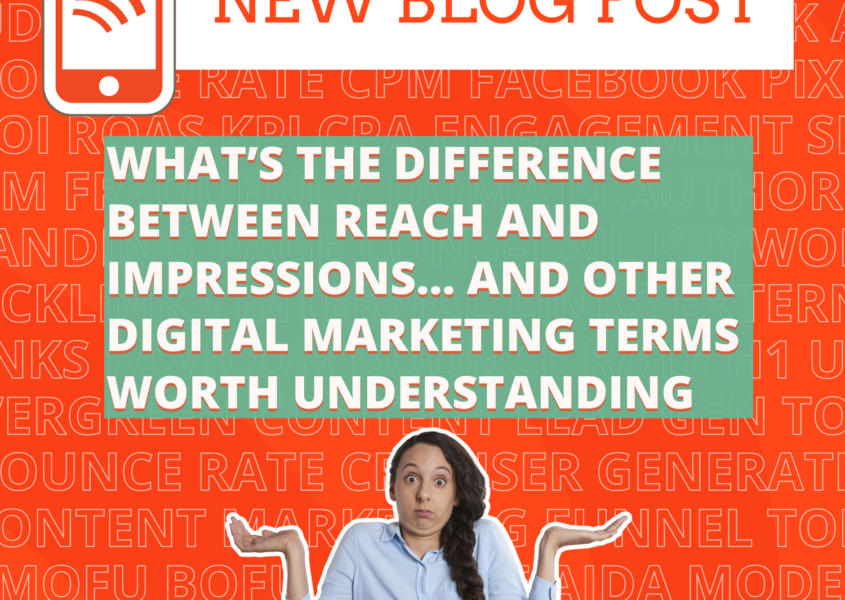
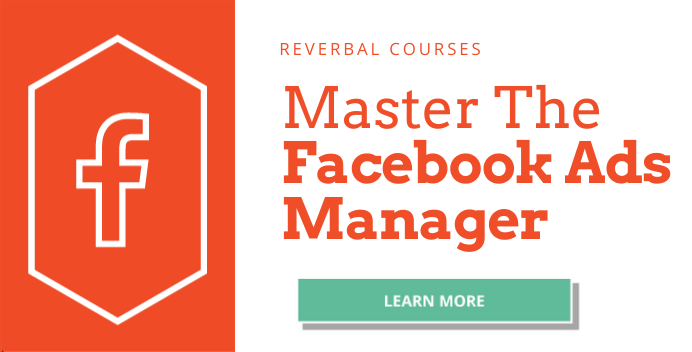

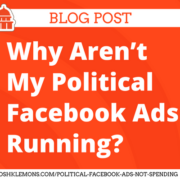
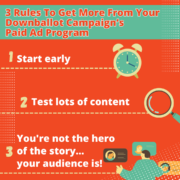
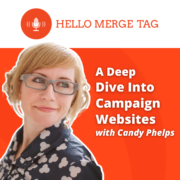
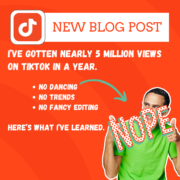
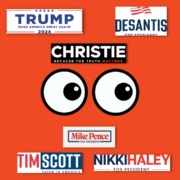
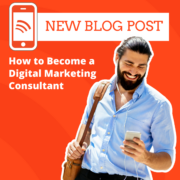
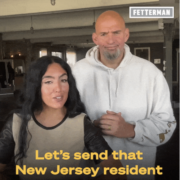


Leave a Reply
Want to join the discussion?Feel free to contribute!